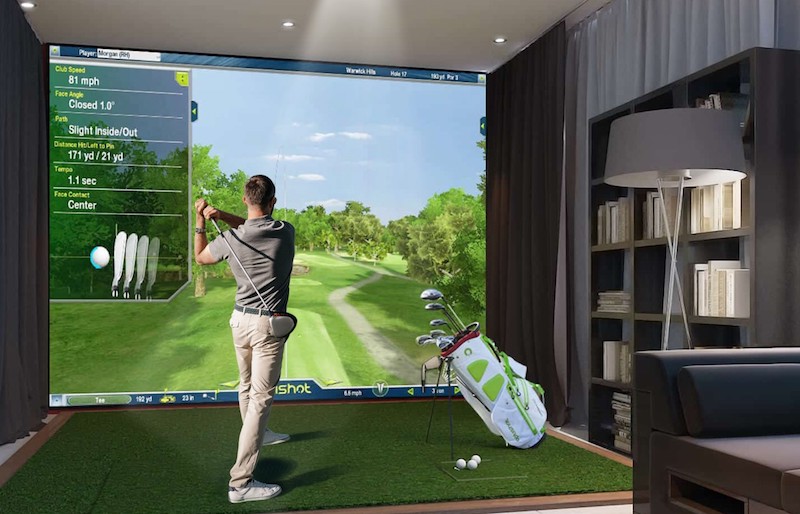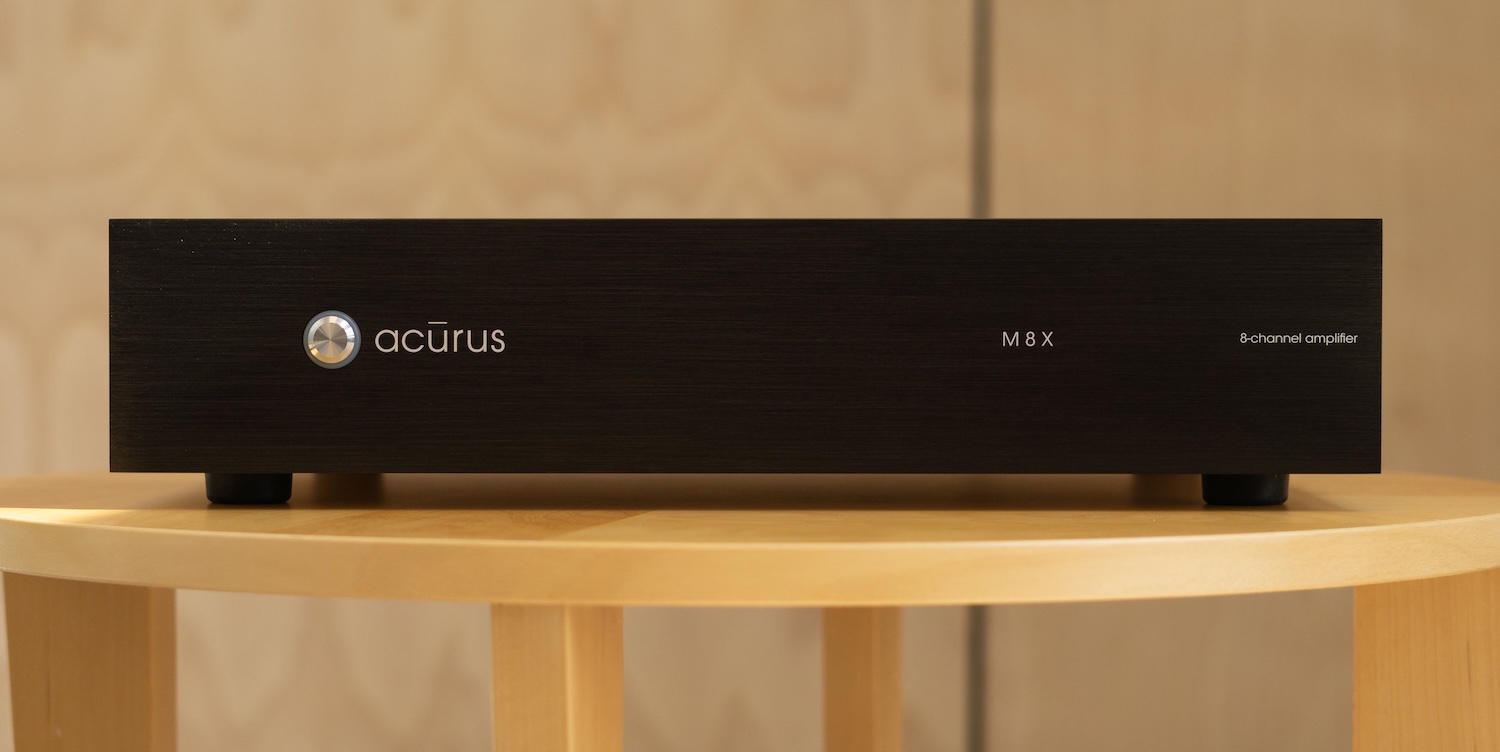In-home golf simulator system demand is on the rise.
Topgolf transformed the driving range into an entertainment area where people watch sports, hit balls, play fun games, and ultimately, relax. This model is now working its way into the residential market where people are creating private entertainment spaces in their homes that are ideal for sports, movies, gaming — and yes, excellent golf due the affordability and tech advancements made to golf simulators in the last two years.
In-home golf simulators can quickly transform the traditional home theater that has been built for 20 years to a dual-purpose home entertainment area. For residential installers, this represents a new opportunity that leverages their knowledge while adding new, sought-after services and skills to their repertoire.
Golf Simulator Sales Increase in 2020
According to Bloomberg, there was 50 percent increase in golf simulator sales last year, with the coronavirus teeing off additional interest. The National Golf Foundation (NGF) reports 12.1 million golfers were playing off-course last year. That’s almost as many as the 12.6 million golfers who played on actual fairways and greens, and a number the NFG expects to surpass traditional turf-goers this year. The foundation attributes the surging trend primarily to golf simulators. They’re not only being installed in homes but also becoming entertainment fixtures at golf retailers, club fitters, and clubhouses and golf schools to gain additional foot traffic.
Buzz from Pro Golfers
Golf simulators are also getting buzz on the pro side. Last year, three-time green jacket winner Phil Mickelson touted his GCQuad numbers — Foresight Sports’ much proclaimed golf simulator launch monitor — on social media. Those numbers — a 328-yard carry and 180 mph ball speed — were enough to capture news headlines in the sports and golf press. And if a golf legend like Mickelson is using golf sim to perfect his swing, golf spectators and enthusiasts are certainly following his lead.
Golf Simulators Prices Go Down
For years, golf simulators were a cornerstone of a very niche residential market. For no less than $30,000 to $50,000, these systems were installed into the homes of only the most devoted golf players, celebrities, and golf champions to practice their swing year-round. After all, even the best courses don’t always have great weather. What past golf simulators lacked wasn’t only affordability but also a realistic and immersive experience.
As technology has matured and the prices have become more reasonable, it’s shown how truly transformative golf simulators can be for anyone’s game. Today, systems are available for a fraction of the cost and with cutting-edge features that replicate the real-life course experience to truly help customers dial in both their short and long game. This isn’t to be compared to the family fun of playing Wii Golf. This is high-end simulation that uses sophisticated technology to capture and inform players of ball data, such as carry distance, total distance, backspin, side spin, distance off center, launch angle, and more — all the data pros are using to tweak their game.
Projector Anchors Golf Simulator Experience
Although the golf simulator system components — hitting mat, launch monitor, computer, screen, net, and software — might be a new territory for integrators, it’s the projector that anchors the experience — whether it’s golf simulator, watching a movie, or catching the latest PGA tournament. Likewise, sound and control systems are all familiar equipment of a golf simulation room, so integrators need only to invest time in learning about the necessary accessories.
On the golf simulator side, the prevalence and support of 4K is what will also transform growth opportunities. The latest golf simulation software from E6 and others now support true 4K UHD resolution, which will take the image from looking like something expected on Wii to feeling like you are at the course. Plus, customers are already consuming golf and sports broadcasts in 4K.
In addition, the hitting screen, similar to a home theater projector screen but wider and made to handle balls, side curtains, and lighting is the driving reason for more resolution. A larger screen needs more resolution. Finally, the availability of affordable high brightness 4K projectors is helping push customers over the tipping point.
A projector custom-engineered for a golf simulator is a game-changer, capable of replicating the fine details of fairways. The greens appear like they would when playing on the actual course. Players can see crisp ripples of waves on the water. Engineered for color accuracy, these projectors also are perfect for ensuring movies and shows appear just as the creators intended. And in the wake of Google cutting its own cord on cable services last year and an extremely viable direct-to-streaming model that was tested during the pandemic, homeowners are even more eager to replicate the big-screen movie-going experience at home.
Installation Tips
Golf simulators are being set up in basements, garages, family rooms and other non-traditional spaces, which can present a few installation and maintenance hurdles. To speed up installation, look for a model that’s rich in installation features and doesn’t require an expensive lens to achieve the right screen fit and throw.
Likewise, higher ceilings in these rooms can be problematic for continual maintenance to keep the projector in optimal condition. A laser projector with sealed IP5X-certified — a certification given to the most popular and rigorously tested mobile and smart watch technology available today —engine creates a maintenance-free experience, eliminating filters and lamps while guarding against dust that can erode the lifespan of the homeowner’s investment.
Installers are experts at providing the entertainment experience customers want, and golf simulation is no different. Installers can put their install experience to use to tap into this market and deliver an immersive, life-like golf experience as well as big-screen entertainment in one stroke.







![ecobee premium airzone control The ecobee Smart Thermostat Premium. [Photo credit | ecobee]](https://restechtoday.com/wp-content/uploads/2025/06/ecobee-premium.jpg)
